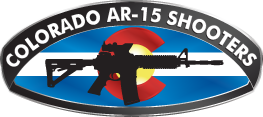Have you read the underlying references to the Wiki? Anybody can write a Wiki entry and add whatever bias they have. There are two and some times more sides to the story. At least one of the sourced documents is not available but most are simply regurgitating Gura.
This is from Reference 6 in the above posting;
Mr. Levy and his colleagues, Alan Gura and Clark M. Neily III, have worked hard to make what they say are modest claims. They said they were inspired by the work ofThurgood Marshall, who masterminded the litigation campaign against racially segregated schools.
“We didn’t want to be going to the court with a radical case,” Mr. Levy said. “All we are asking is to let law-abiding residents of the District of Columbia possess functional firearms to defend themselves where they live and sleep.”
Mr. Levy, who said he is “not particularly interested in guns,” pursued the case to vindicate his libertarian principles.
“Free markets,” he said, ticking off his basic beliefs. “Private property. Individual rights. And most of all, strictly limited government in accordance with the constitutional structure the framers established.”
The road to the Supreme Court has been a bumpy one, Mr. Levy said, thanks mostly to the National Rifle Association.
“The N.R.A.’s interference in this process set us back and almost killed the case,” he said. “It was a very acrimonious relationship.”
“Their thinking was,” Mr. Levy said, “‘good case, might win in the appellate court but it could be a problem if it reaches the Supreme Court.’”
Wayne LaPierre, the N.R.A.’s chief executive officer, largely confirmed that characterization. “There was a real dispute on our side among the constitutional scholars about whether there was a majority of justices on the Supreme Court who would support the Constitution as written,” Mr. LaPierre said.
Both men said the N.R.A. and Mr. Levy’s team were now on good terms.







 Reply With Quote
Reply With Quote
